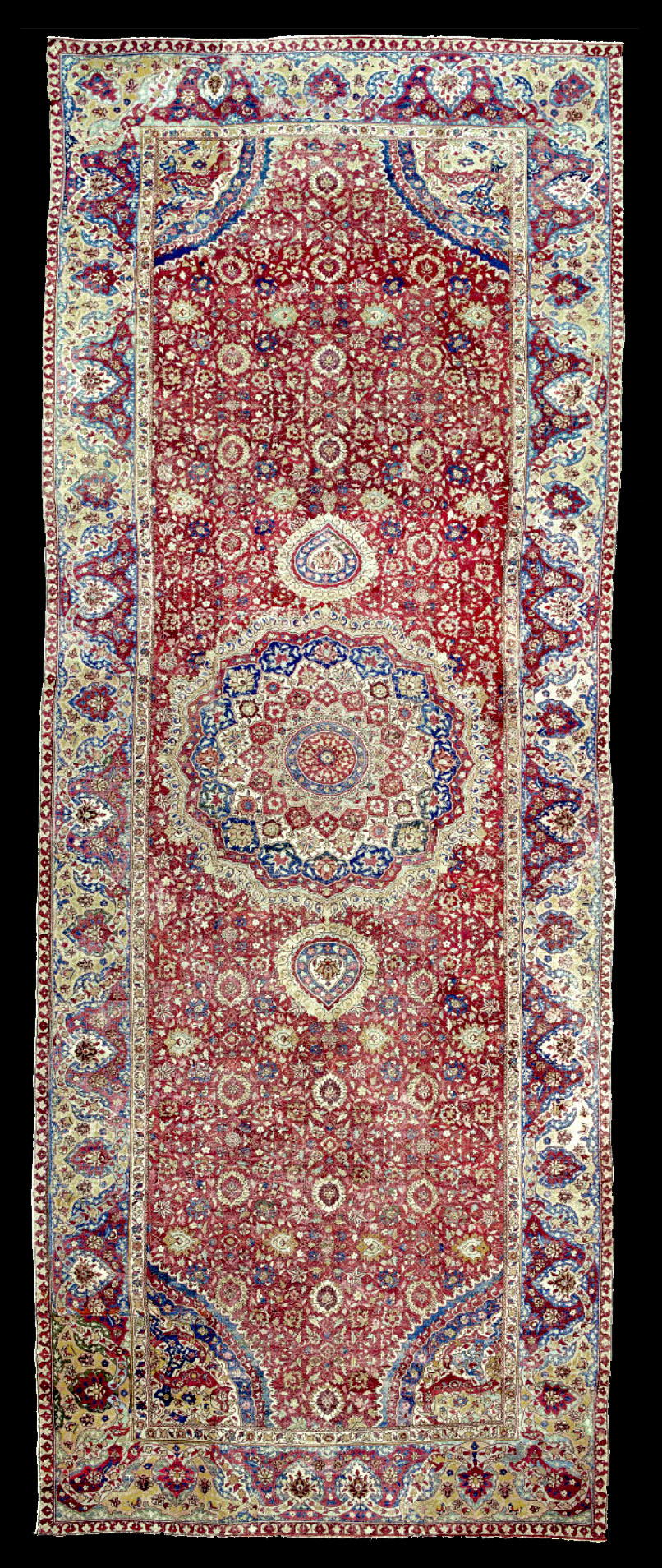|
A Safavid carpet,
Tabriz, Azerbaijan, 16th century, 756x274cm, Shah Tahmasb I or Muhammed
Khudabanda Period. overall wear, scattered repiling, each corner rewoven,
rejoined in a number of panels incurring minor loss. $76 000 - 110 000
|
|
The field design of this carpet is a very good example of the classic
pendant medallion and spandrel design whose ornaments had been a common
feature of manuscript illuminations of the earlier 15th century
'international Timurid style', see David James, After Timur: Qur'ans of the
15th and 16th centuries, The Nasser D Khalili Collection of Islamic Art,
London, 1993, no.5 ff.3b-4a. The quarter-medallion spandrel, the
mosaic-patterned circular medallion and its tear-drop pendants are all
delicately scalloped with a fine tracery outline and appear super-imposed
upon a field of fine linked leaf and flowering vine.
Two medallion carpets, one formerly in the Joseph V.McMullan collection (M.S.Dimand
and J.Mailey, Oriental Rugs In the Metropolitan Museum of Art, New York,
1973, no.4, p.97), the other formerly in the Charles T.Yerkes collection (M.S.Dimand
and J.Mailey, op. cit, fig.62, no. 3), now both in the Metropolitan Museum
of Art, share a very similar interlaced arabesque strapwork and palmette
border. A further example is in the Victoria and Albert Museum, London,
(Arthur Upharn Pope, A Survey of Persian Art, Oxford, 1938, pl.1112). The
interpretation of this border on the present lot however is more fluid than
the afore- mentioned examples.
Interestingly, whilst comparable examples can be found for the border design
of the present lot, the only carpet with the same drop pendants is the
Trinitarias Carpet in the National Gallery of Victoria, Melbourne,
Australia. Originally mistaken for a Persian carpet, it is now considered,
following in-depth analyses, to be a Mughal carpet from the mid 17th
century, North India, (R.Leong, B.Cosgrove and S.Osei, 'Unrolling a hidden
treasure' Hall, Issue 168, Summer 2011, pp.96-99). In addition, the field
designs of both that carpet and the present lot, are remarkably similar.
Whilst our carpet does not have the inclusion of inverted paired cloudbands,
both carpets have a stong vertical rhythm, accentuated by the pronounced
alternating palmettes running in columns from one end to the other.
Whilst the present carpet does have some condition problems, the colours
remain lively and clearly decipherable, and illustrate quite how remarkable
the colours must have seen when they were first woven.
 |

